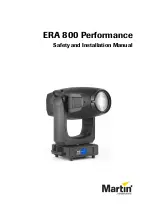
10 |
NexGen MIS LPS-Flex Mobile Implant System
Surgical Technique
MIS Midvastus Approach
(cont.)
The knee is in extension for the preliminary portion
of the lateral knee exposure. First, the mobility of
the patella is determined. Rakes are used to gently
mobilize the patella. Mobilization may be inhibited,
however, by fibrosis of the fat pad inferiorly or scarring
of the suprapatellar synovium superiorly. Both
conditions can be established by careful palpation and
appropriate releases performed by sharp dissection.
Large patellar osteophytes may be removed at this
point to make patellar mobilization easier. If partial
eversion—bringing the patella perpendicular to
the joint (90°)—is possible, no further dissection
distally in the fat pad or proximally via suprapatellar
synovectomy is needed. With the patella partially
everted, the bulk of the fat pad can be debrided at
the surgeons discretion. The tighter the exposure, the
more fat pad debridement will facilitate visualization
and cutting guide placement.
The lateral joint space is then exposed by flexing the
knee. It is important to avoid disrupting the extensor
insertion by gently mobilizing the patella, slowly
flexing the joint, and externally rotating the tibia while
applying gentle pressure on the patella. An excessively
thick patella may make exposure more difficult and it
may help to make a standard patellar cut to decrease
the thickness of the patella. If this is necessary, the
patella must be protected from retraction forces with
an appropriate patellar protection device.
Once the patella is subluxed, one or two standard-size
Hohmann retractors placed along the lateral flare of
the tibial metaphysis will maintain the eversion of the
patella and the extensor mechanism. If present, the
anterior cruciate ligament is released. A subperiosteal
dissection along the proximal medial and lateral
tibia to the level of the tibial tendon insertion can
be performed as needed to mobilize the tissue
envelope and to help adequately expose the bone.
Release of the lateral patellofemoral ligament and/
or limited release of the lateral capsule (less than 5
mm) may occasionally, but rarely, be required to help
minimize tension on the extensor mechanism. Pointed
Hohmann and knee joint retractors may be used to
mobilize the skin and arthrotomy incision to create the
“mobile window” through which the remainder of the
procedure is performed.
It is very important to maintain observation of the
patellar tendon and the wound margins throughout
the procedure to ensure that tension on these tissues
are kept to an acceptable level.
Содержание NexGen MIS LPS-Flex
Страница 1: ...NexGen MIS LPS Flex Mobile Implant System Surgical Technique ...
Страница 69: ......
Страница 70: ...68 NexGen MIS LPS Flex Mobile Implant System Surgical Technique Notes ...
Страница 71: ......













































